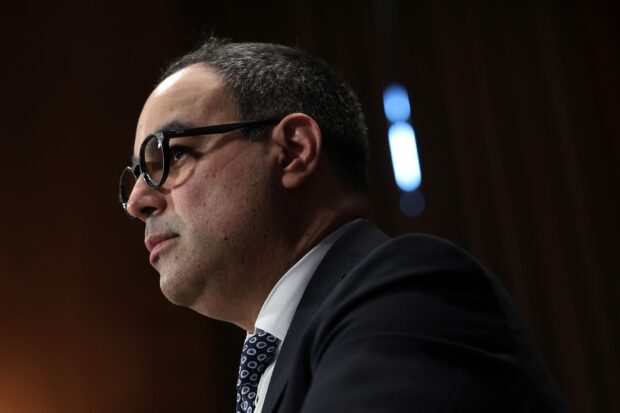The Justice Department’s antitrust division said in a letter dated last Friday that a proposed methodology change by S&P — the world’s largest credit ratings company — could raise barriers for its rivals. The changes could end up hurting the credit grades of insurance companies that invest in bonds that aren’t rated by S&P.
The firm should “carefully consider whether penalizing insurers that purchase securities rated by S&P’s competitors has the potential to raise barriers to entry and expansion by competitors, insulate S&P from competition, or otherwise suppress competition from rival rating agencies,” said antitrust chief Jonathan Kanter in the letter. “Such actions could raise significant concerns that the Sherman Act has been — or will be — violated and warrant additional scrutiny.”
S&P is the No. 1 player in the U.S. market for credit ratings, which financial firms and investors use to measure the risk of products, companies or other entities. S&P controlled about 50 percent of the market as of December 2020, according to the Securities and Exchange Commission.
Late last year, S&P proposed changing for the first time in more than a decade how it measures the creditworthiness of insurance companies. The new method would put more weight on the bonds within a firm’s investment portfolio and rank bonds rated exclusively by its competitors as less creditworthy. In some cases, that would demote the bonds to junk status — or beneath investment grade.
Critics have said the proposed change would pressure bond issuers to do more business with S&P and possibly devalue the assets already held by insurers. The National Association of Insurance Commissioners — a standards group for commissioners of U.S. states and territories — raised its own concerns about the S&P methodology change in March, urging S&P to reconsider.
S&P said in a statement Wednesday it would carefully review and consider the DOJ’s comment in its criteria development process, which it said is focused on “analytical quality.” S&P said its “policies and procedures provide a framework that supports our analysts in operating independently of commercial considerations and influence.”
Photo: Jonathan Kanter; Photographer: Win McNamee/Getty Images





















 That Insurance Talent Crisis? It’s a Global Knowledge Opportunity
That Insurance Talent Crisis? It’s a Global Knowledge Opportunity  Executives on the Move at AIG, White Mountains, Vermont Mutual
Executives on the Move at AIG, White Mountains, Vermont Mutual  E&S Property In Focus: Competition Up, Price Momentum Waning
E&S Property In Focus: Competition Up, Price Momentum Waning  Survey: Majority of CA/FL Homeowners See Rise in Insurance Costs, Coverage Changes
Survey: Majority of CA/FL Homeowners See Rise in Insurance Costs, Coverage Changes 